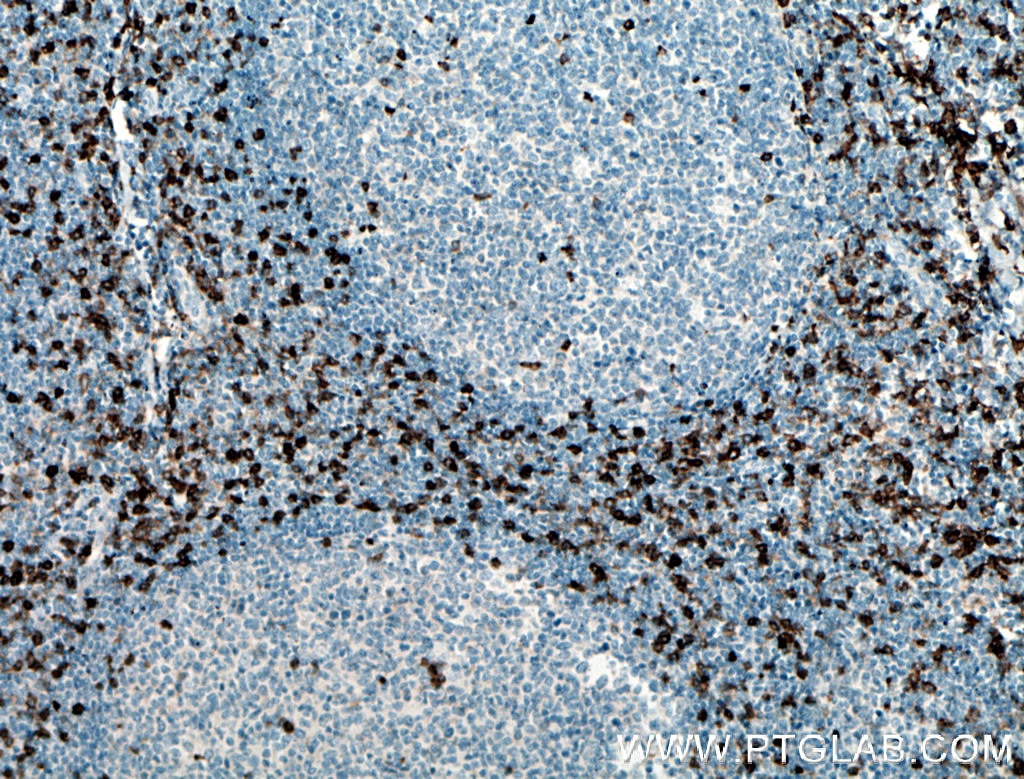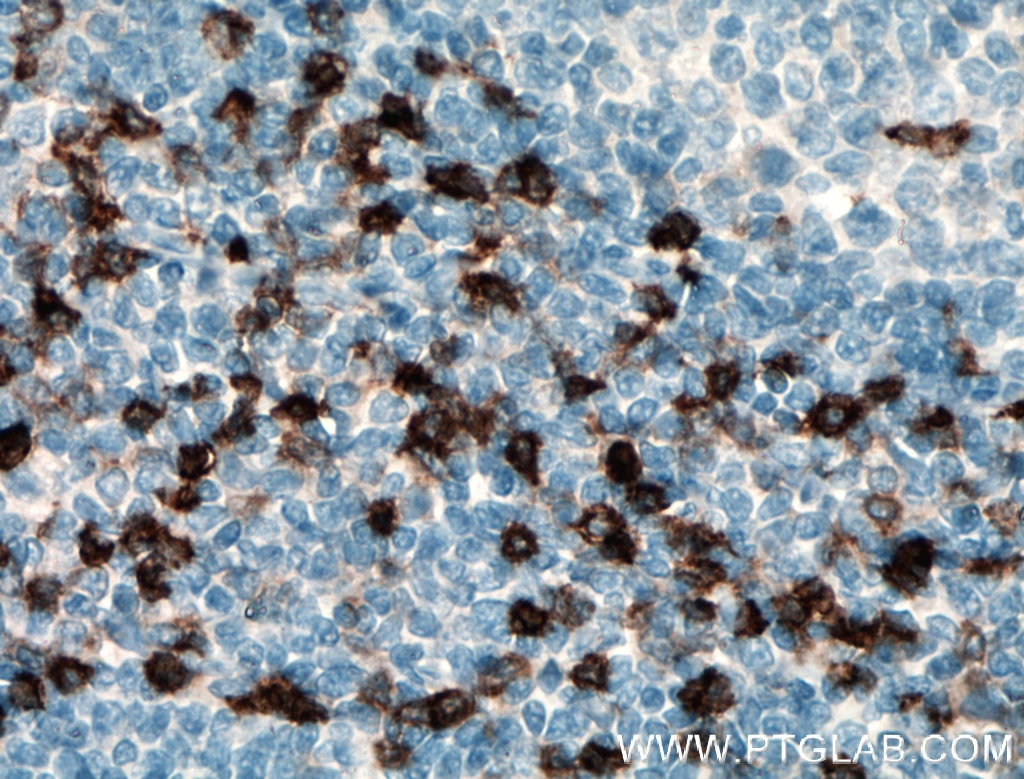Anticorps Polyclonal de lapin anti-CCR5
CCR5 Polyclonal Antibody for IHC, ELISA
Hôte / Isotype
Lapin / IgG
Réactivité testée
Humain et plus (1)
Applications
IHC, IF, ELISA
Conjugaison
Non conjugué
N° de cat : 17476-1-AP
Synonymes
Galerie de données de validation
Applications testées
| Résultats positifs en IHC | tissu d'amygdalite humain, il est suggéré de démasquer l'antigène avec un tampon de TE buffer pH 9.0; (*) À défaut, 'le démasquage de l'antigène peut être 'effectué avec un tampon citrate pH 6,0. |
Dilution recommandée
| Application | Dilution |
|---|---|
| Immunohistochimie (IHC) | IHC : 1:400-1:1600 |
| It is recommended that this reagent should be titrated in each testing system to obtain optimal results. | |
| Sample-dependent, check data in validation data gallery | |
Applications publiées
| IHC | See 3 publications below |
| IF | See 4 publications below |
Informations sur le produit
17476-1-AP cible CCR5 dans les applications de IHC, IF, ELISA et montre une réactivité avec des échantillons Humain
| Réactivité | Humain |
| Réactivité citée | Humain, Macaque |
| Hôte / Isotype | Lapin / IgG |
| Clonalité | Polyclonal |
| Type | Anticorps |
| Immunogène | CCR5 Protéine recombinante Ag11493 |
| Nom complet | chemokine (C-C motif) receptor 5 |
| Masse moléculaire calculée | 352 aa, 41 kDa |
| Numéro d’acquisition GenBank | BC038398 |
| Symbole du gène | CCR5 |
| Identification du gène (NCBI) | 1234 |
| Conjugaison | Non conjugué |
| Forme | Liquide |
| Méthode de purification | Purification par affinité contre l'antigène |
| Tampon de stockage | PBS with 0.02% sodium azide and 50% glycerol |
| Conditions de stockage | Stocker à -20°C. Stable pendant un an après l'expédition. L'aliquotage n'est pas nécessaire pour le stockage à -20oC Les 20ul contiennent 0,1% de BSA. |
Informations générales
CCR5 (also known as CD195) is a member of the beta chemokine receptor family. This protein is expressed by T cells and macrophages and is known to be an important co-receptor for macrophage-tropic viruses, including HIV, to enter host cells. The natural chemokine ligands that bind to CCR5 include MIP-1-alpha, MIP-1-beta, MCP-2, and RANTES.
Protocole
| Product Specific Protocols | |
|---|---|
| IHC protocol for CCR5 antibody 17476-1-AP | Download protocol |
| FC protocol for CCR5 antibody 17476-1-AP | Download protocol |
| Standard Protocols | |
|---|---|
| Click here to view our Standard Protocols |
Publications
| Species | Application | Title |
|---|---|---|
Nat Biotechnol Magnify is a universal molecular anchoring strategy for expansion microscopy | ||
Nat Immunol Targeting regulator of G protein signaling 1 in tumor-specific T cells enhances their trafficking to breast cancer. | ||
J Biol Chem Regulation of C-C chemokine receptor 5 (CCR5) stability by Lys197 and by transmembrane protein aptamers that target it for lysosomal degradation. | ||
Sci Rep PET-CT and RNA sequencing reveal novel targets for acupuncture-induced lowering of blood pressure in spontaneously hypertensive rats. | ||
Retrovirology CCR5 editing by Staphylococcus aureus Cas9 in human primary CD4+ T cells and hematopoietic stem/progenitor cells promotes HIV-1 resistance and CD4+ T cell enrichment in humanized mice. | ||
Acta Trop Mechanism of Lian Hua Qing Wen capsules regulates the inflammatory response caused by M1 macrophage based on cellular experiments and computer simulations |



